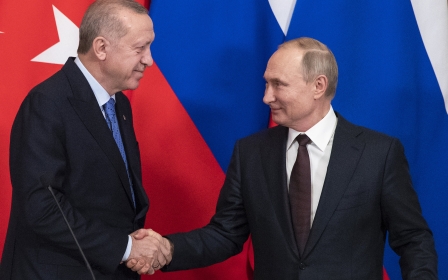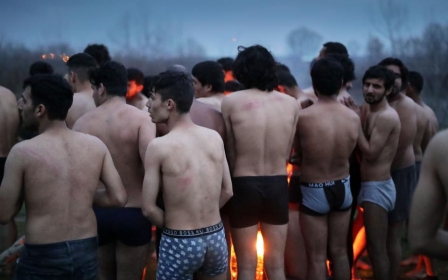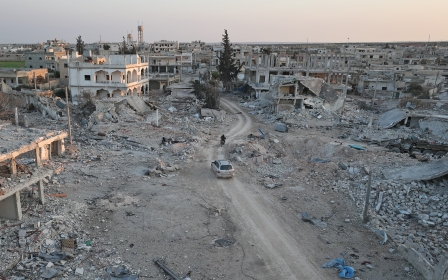
In pictures: Nine years of Syria's war
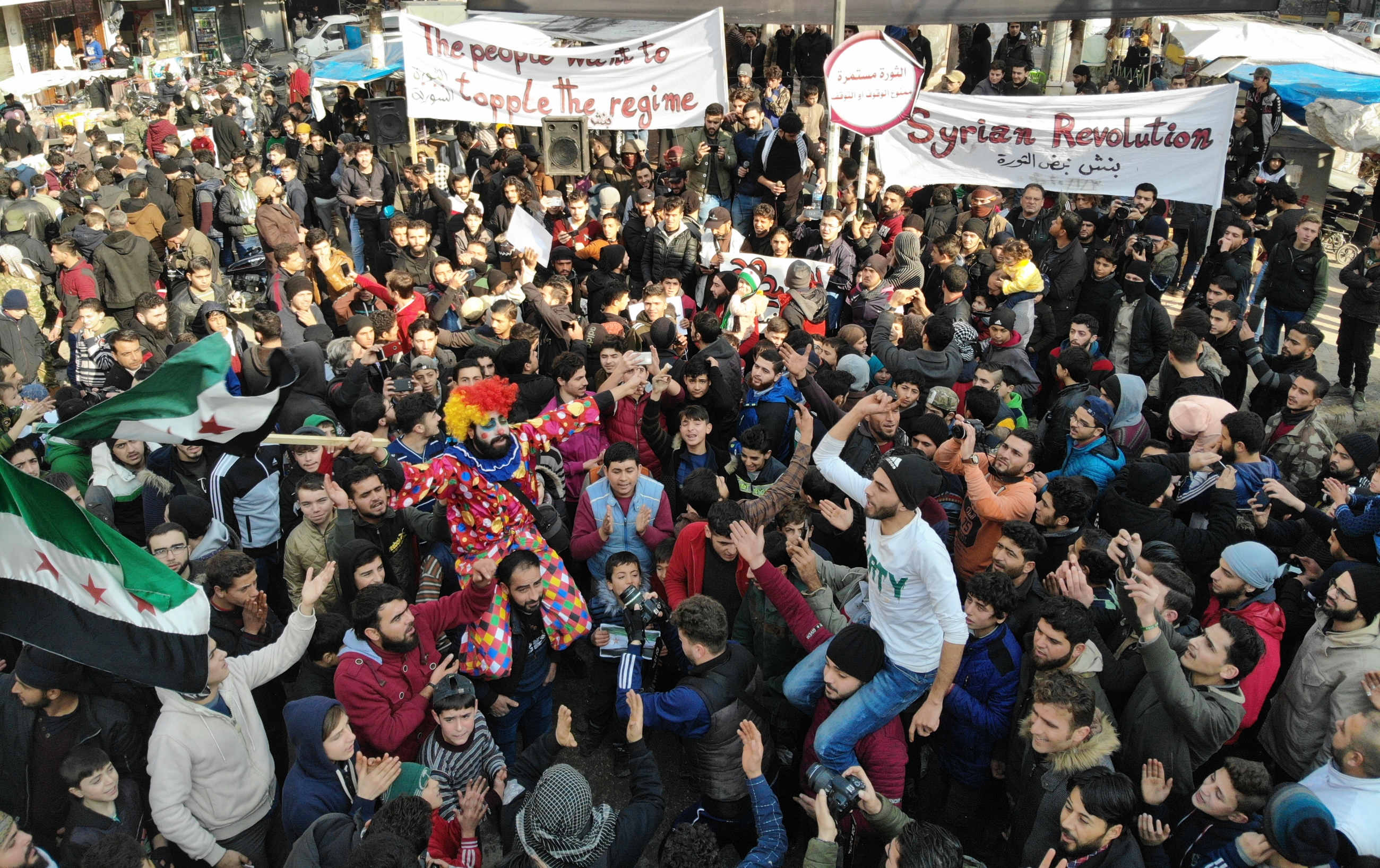
On 6 March 2011 popular anti-regime slogans which had engulfed Egypt and Tunisia were sprayed on a wall in the city of Daraa by a group of young boys, aimed at President Bashar al-Assad. Fifteen of them were subsequently arrested and tortured. As news spread of their brutal ordeal, the first protests demanding Assad's departure Bashar al-Assad were ignited and soon swept through the country. The peaceful protests were met with a repressive and deadly crackdown. (AFP/Omar Kadour).

Assad's crackdown on protests prompted people to take up arms, and in 2012 bloody battles ensued in places such as Homs. Several Syrian cities were swept up in the conflict, killing thousands and leaving them battle scarred. The conflict set ablaze Aleppo’s historic souq, which dates back to the 15th and 16th centuries, destroying hundreds of shops. (MEE / Tom Westcott)

In the early hours of 21 August 2013, Assad's forces fired rockets carrying Sarin gas into the besieged Damascus suburbs of Eastern Ghouta, killing as many as 1,300 people - the majority civilians and many children. Images and videos quickly emerged showing people having convulsions, suffocating, coughing up blood and foaming at the mouth, shocking the world. The UN denounced the attacks as the worst chemical weapons attacks in 25 years, with then-US president Barack Obama accusing the Syrian government of crossing a “red line”. Obama never followed up on his threat, however, and Assad avoided a US attack by promising to give up his chemcial weapons. (AFP/Shaam News Network)
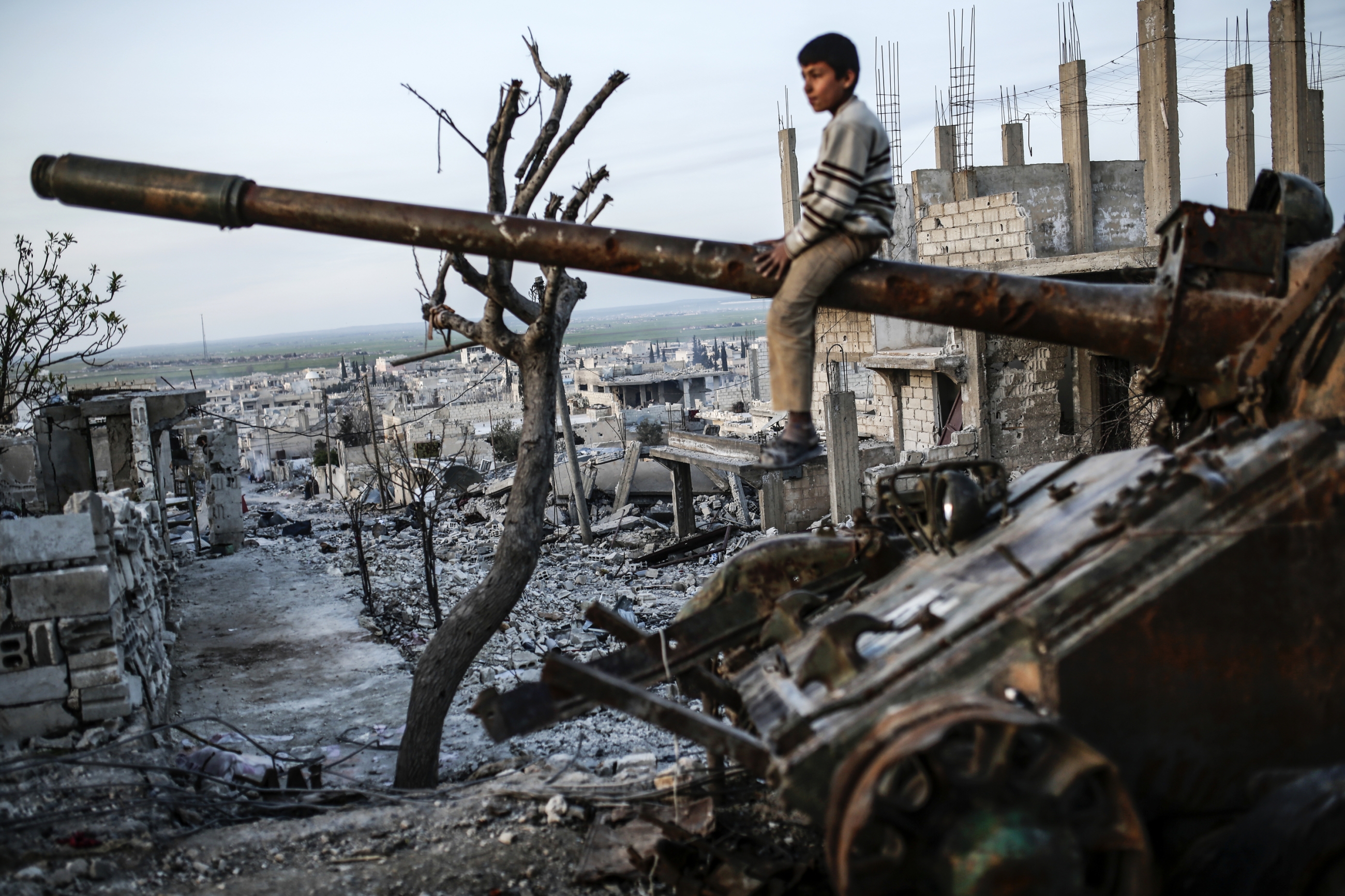
The emergence of the Islamic State group (IS) in 2014 was a turning point in the Syrian civil war, and its militants ran riot across Syria's north and east. In September of that year, IS launched an attack on the Kurdish-held city of Kobane, also known as Ain al-Arab. Backed by the US-led coalition's air strikes, Kurdish forces managed to stop IS from taking the city, and losses to the militants began to be reversed. (AFP/Yasin Akgul)
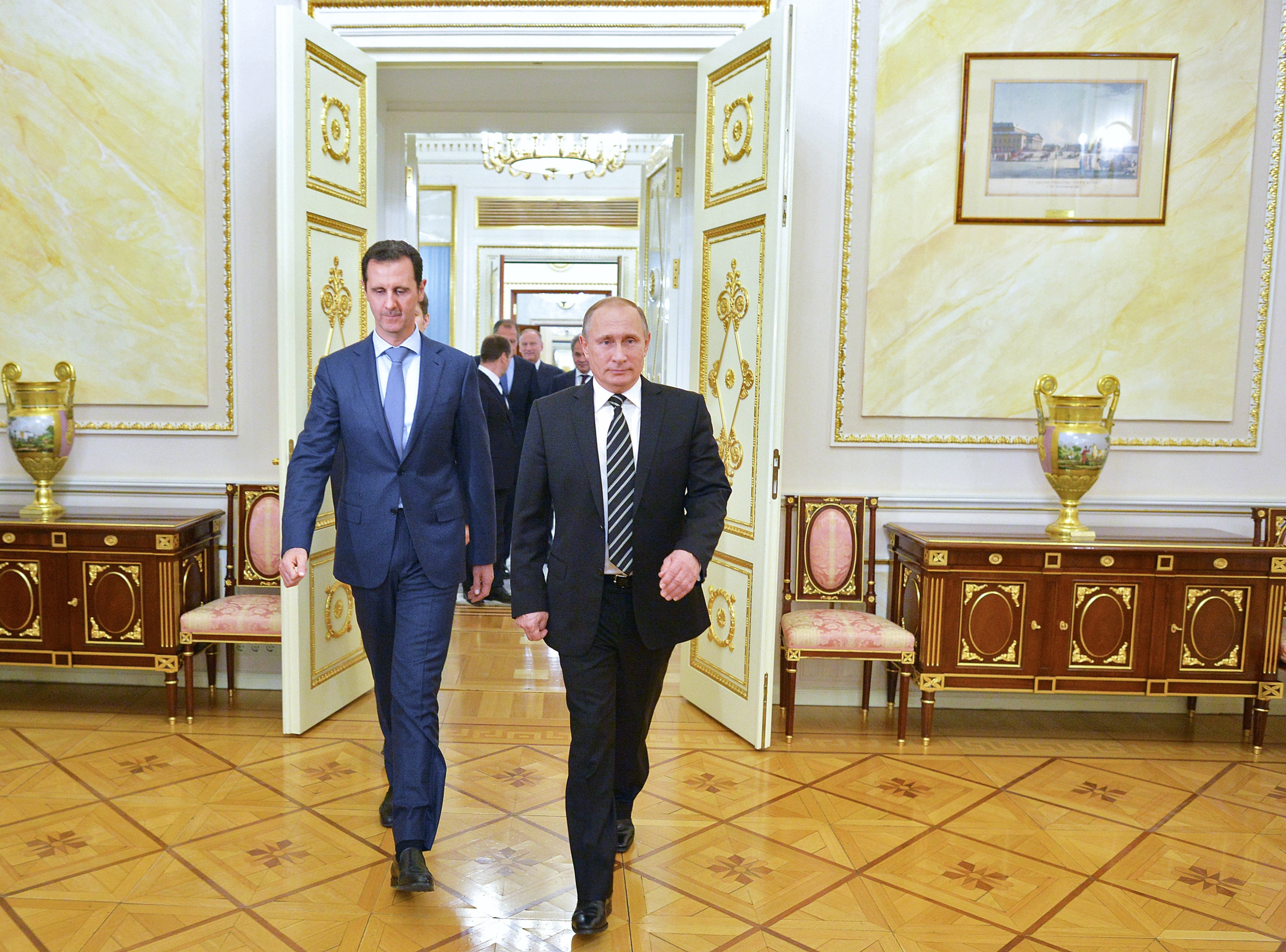
In September 2015 Russia, which had blocked any international action on Assad's government in the UN Security Council, officially entered the war. It was a game changer. Assad headed to Moscow in October on his first foreign trip since the conflict broke out, and Russian warplanes have bombarded opposition-held areas ever since, killing thousands of fighters and civilians. Last month the UN said Russia was likely responsible for war crimes. (AFP/Alexey Druzhinin)
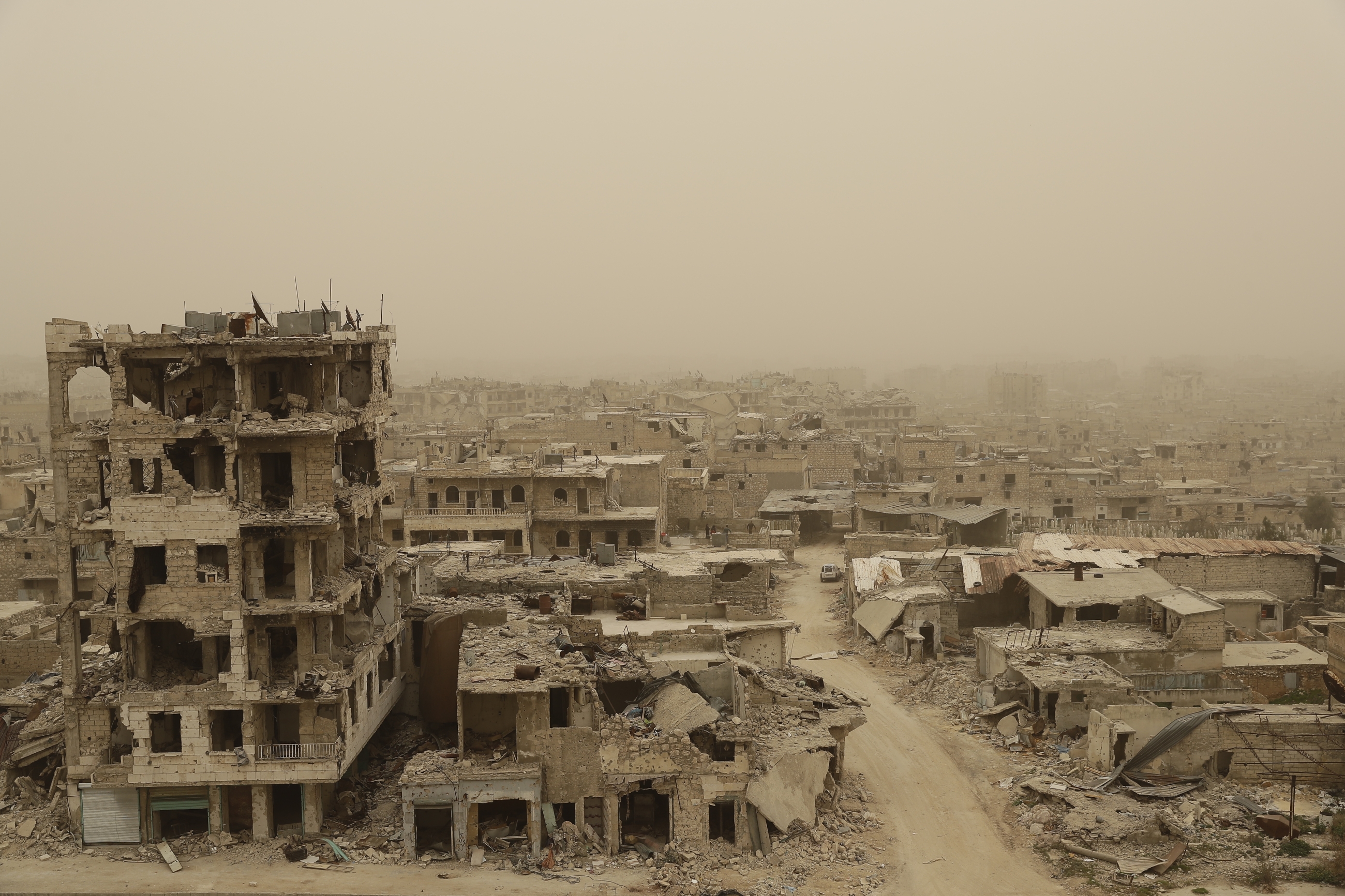
In late 2016, after a brief ceasefire fails, Russia and Syrian government forces intensify their bombardment of eastern Aleppo, held by rebels since 2011, in a bid to recapture Syria's second city. Many hospitals are targeted in the strikes and civilians are killed in their hundreds. In December, the Syrian government declares victory after rebels agree to withdraw, allowing them to evacuate to rebel-held areas outside Aleppo with their families, as well as other civilians who wish to leave the city. (AFP/Joseph Eid)
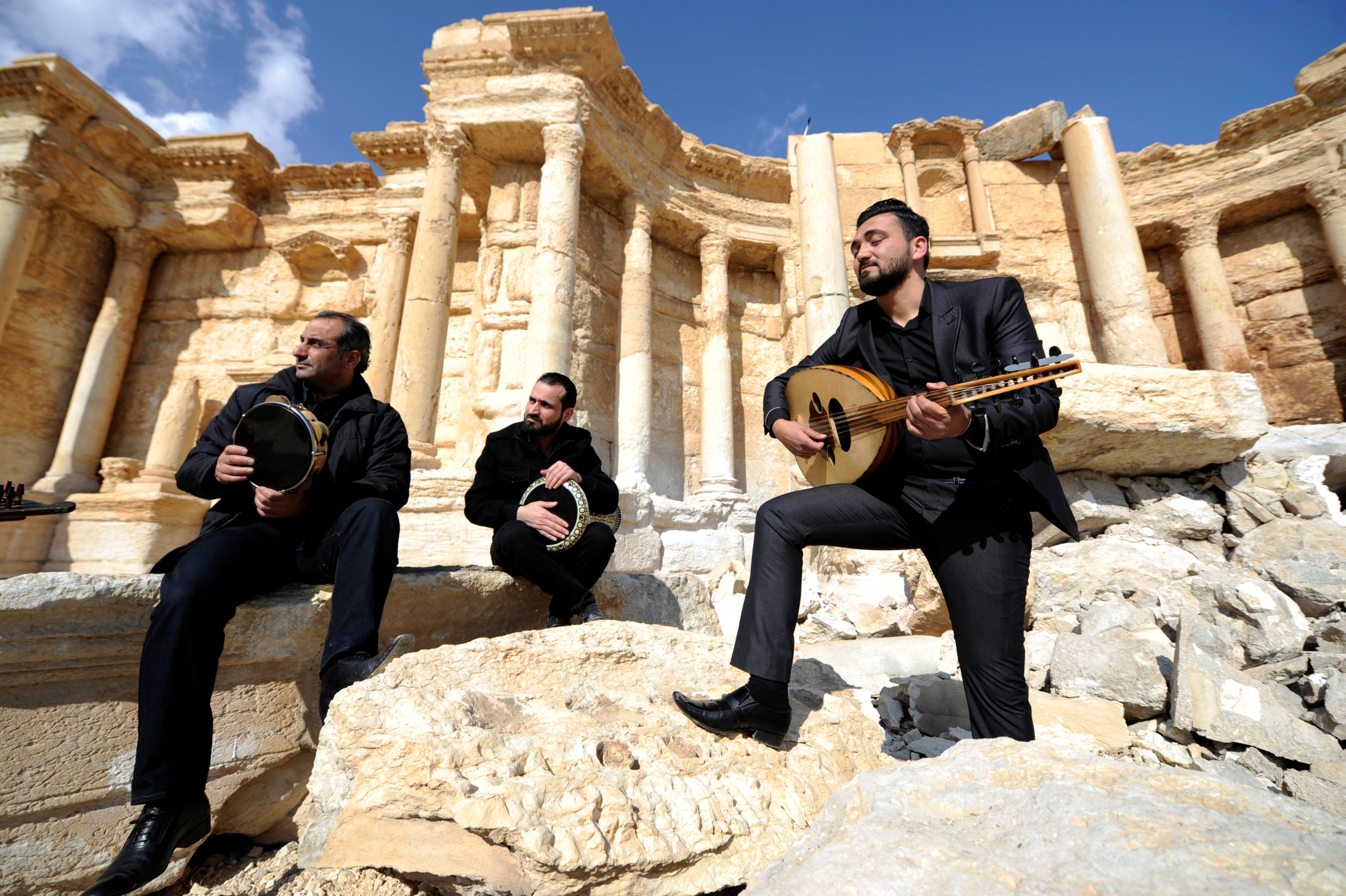
Syrian musicians play their instruments in the theatre of the historic Roman city of Palmyra on 4 March, 2017. Islamic State captured the iconic desert site in 2015 and began destroying landmarks in the World Heritage site. By 2017, after changing hands a few times, Assad's forces had it back and Kurdish forces in the northeast had IS well and truly on the back foot. The US-backed predominantly Kurdish Syrian Democratic Forces (SDF) militia begin their assault on IS’s de facto capital of Raqqa that year, announcing it liberated in October. (Reuters/Omar Sanadiki)
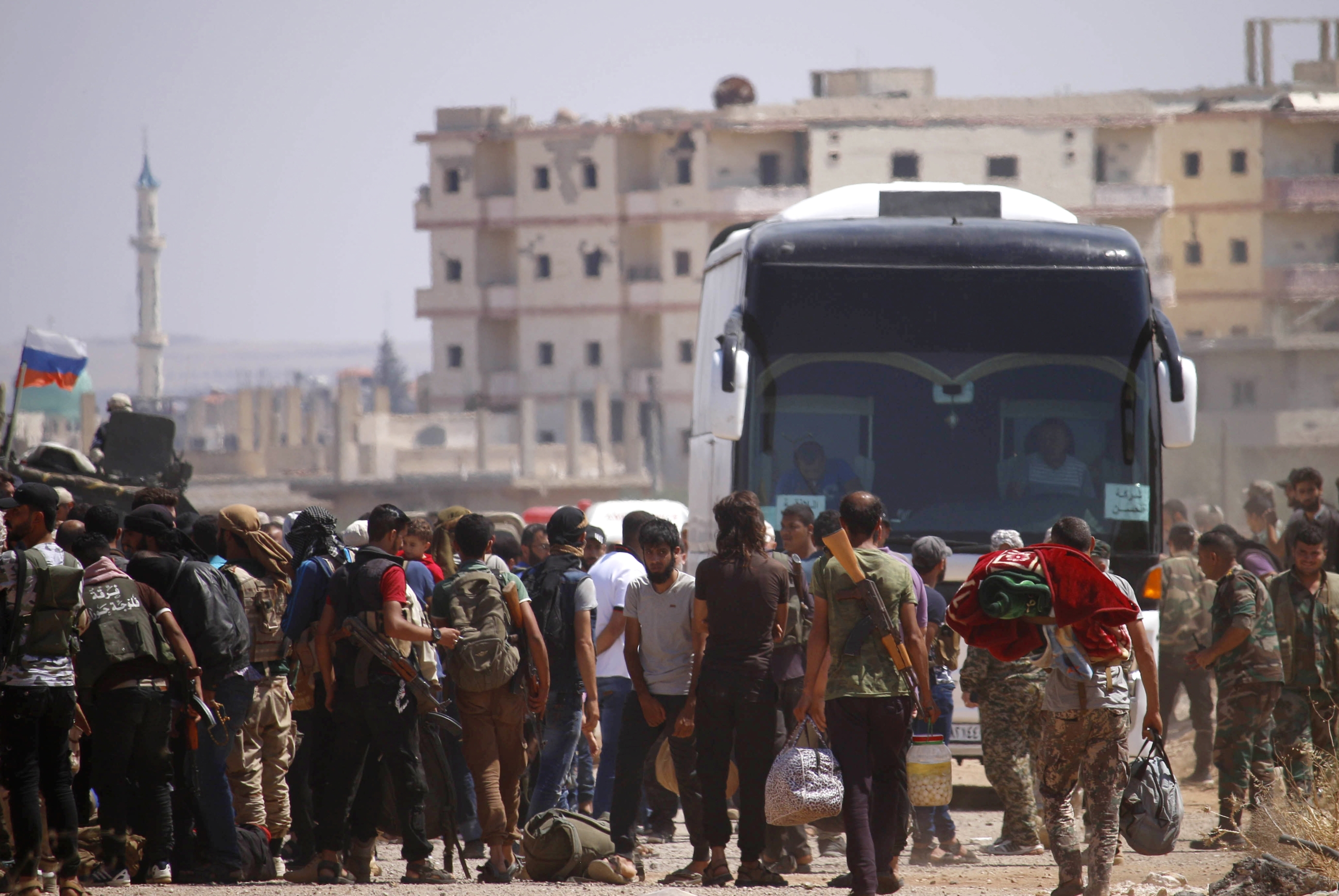
Another offensive is launched by Syrian government forces to retake the southwest region from opposition forces in 2018. The province of Daraa and surrounding areas are targeted until eventually the region is captured by Assad's forces and the rebels within agree to surrender in exchange for a safe passage to the province of Idlib, which becomes one of their last-held territory in the country. A buffer zone is then implemented in and around Idlib following an agreement between Russia and Turkey in the hopes of de-escalating the oncoming government onslaught. (AFP/Mohamad Abazeed)
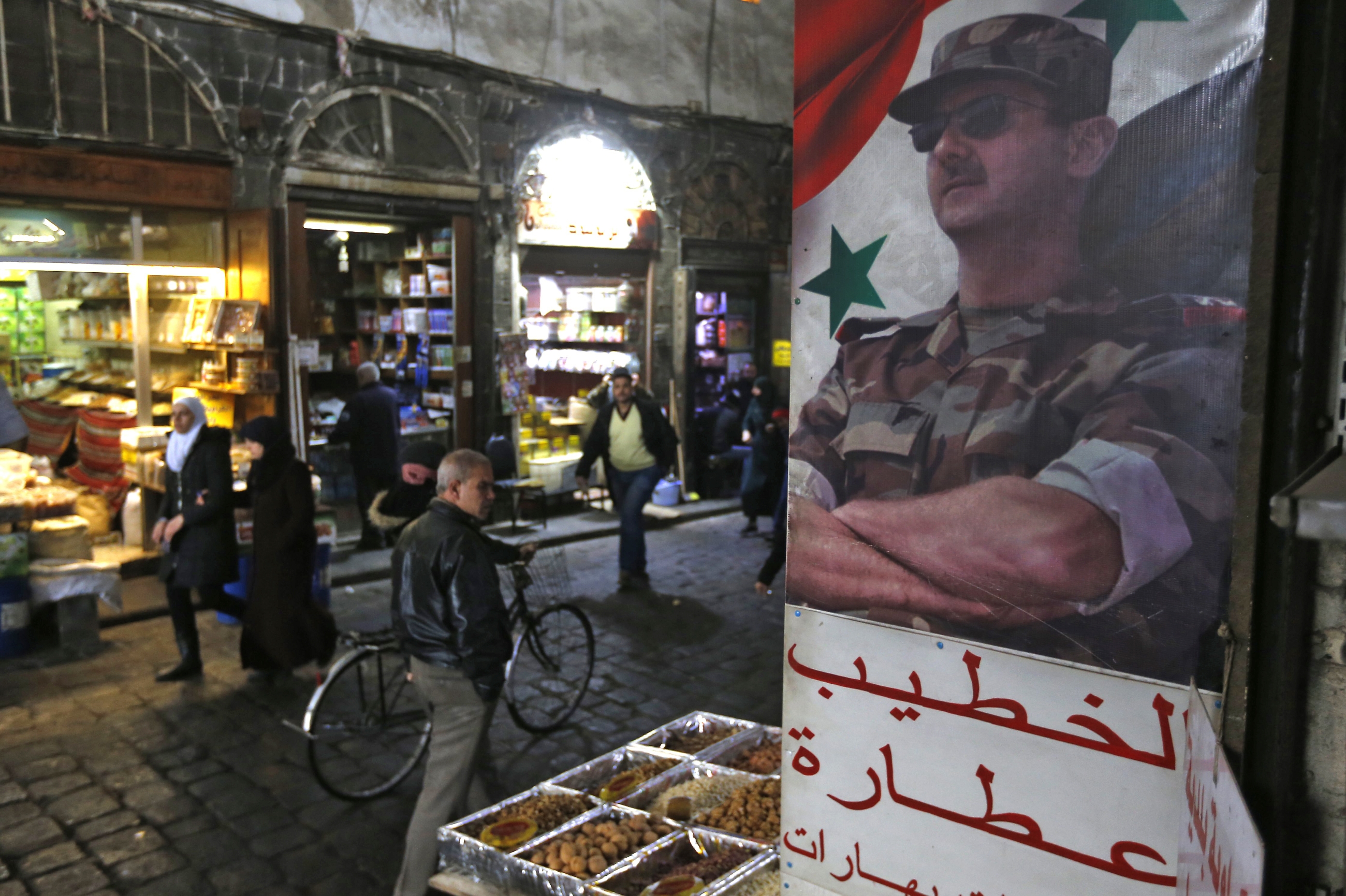
By 2019, over 500,000 people are estimated to have been killed in the war and more than half of Syria’s population have been forced to flee their homes. As the last of the rebel enclaves are captured by pro-Assad forces, a sense of normality is attempted in other parts of the country, like in the capital Damascus, whose centre was largley spared the fighting. Reconstruction projects are now being sold to outside bidders in a bid to start the process of rebuilding the country and the tourism sector is looking at ways to attract visitors despite the volatile situation for millions of Syrians. Meanwhile, the United Arab Emirates and Bahrain reopened their embassies in the Syrian capital. (AFP/Louai Beshara)

This year has seen the war seem to come to a head in northwestern Idlib province, where Russian-backed pro-Assad forces are facing off against the last remaining rebels and the Turkish military. Around a million people have been forced to flee towards the Turkish border since the Syrian government launched its assault in December, prompting Turkey to deploy arms and men into the province in an attempt to stem the flow. Idlib towns such as Ariha, above, have been emptied of their inhabitants. (AFP/Omar Kadour)
This article is available in French on Middle East Eye French edition.
Middle East Eye delivers independent and unrivalled coverage and analysis of the Middle East, North Africa and beyond. To learn more about republishing this content and the associated fees, please fill out this form. More about MEE can be found here.


